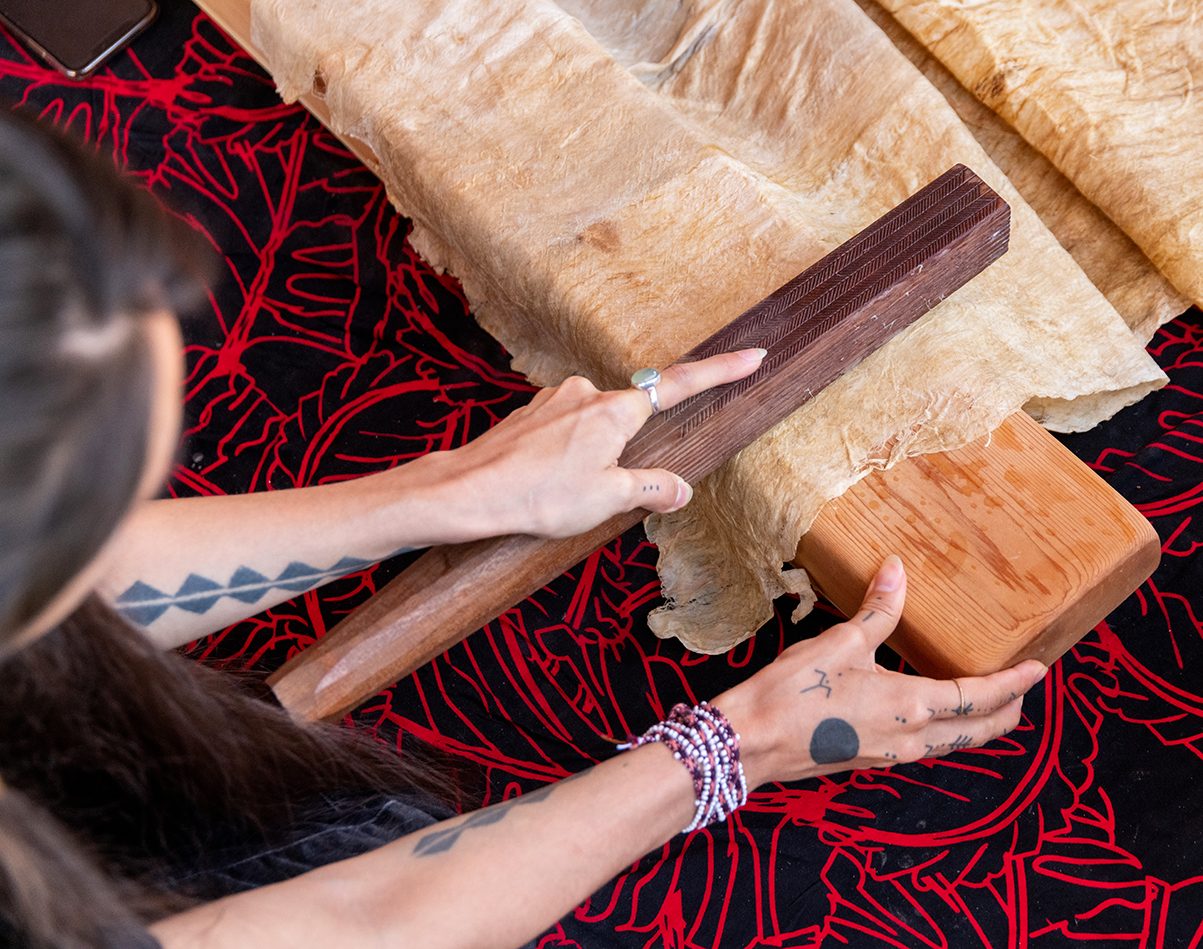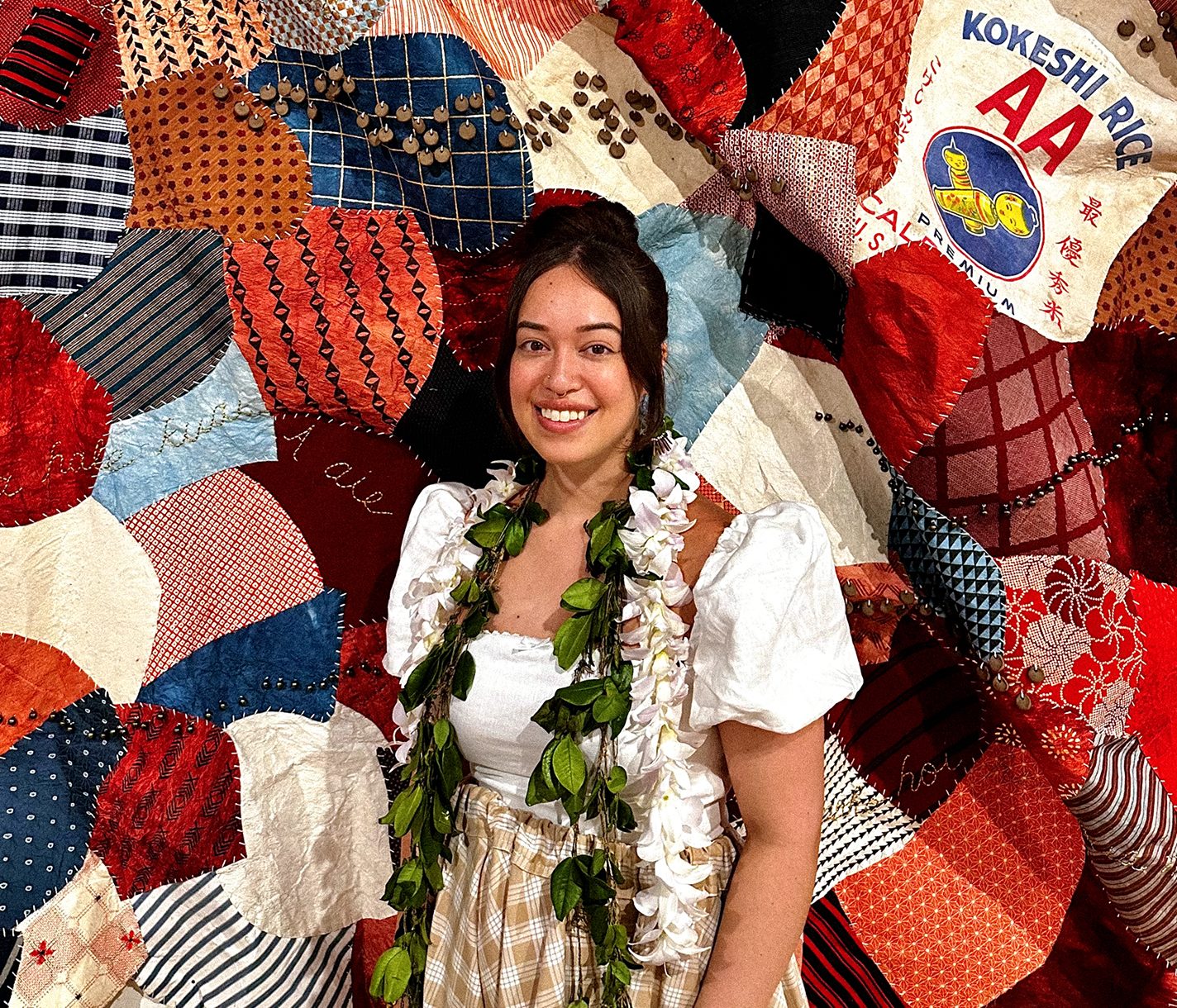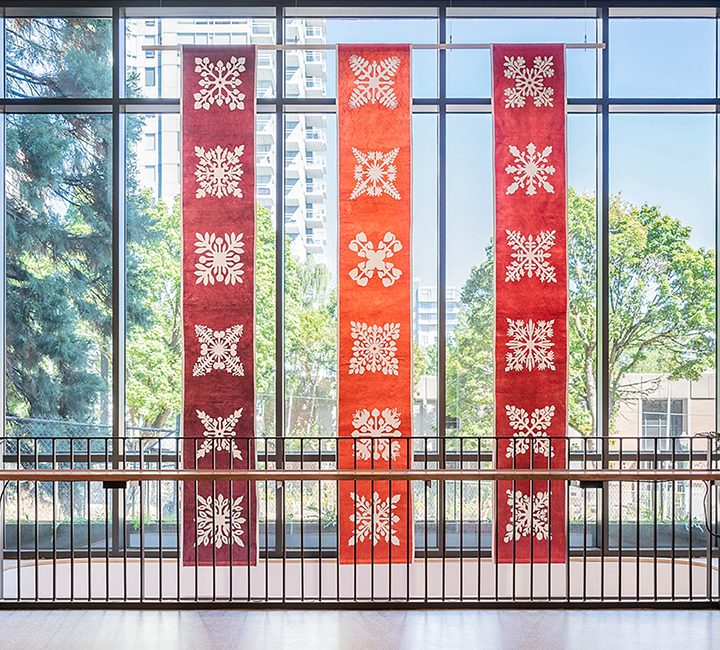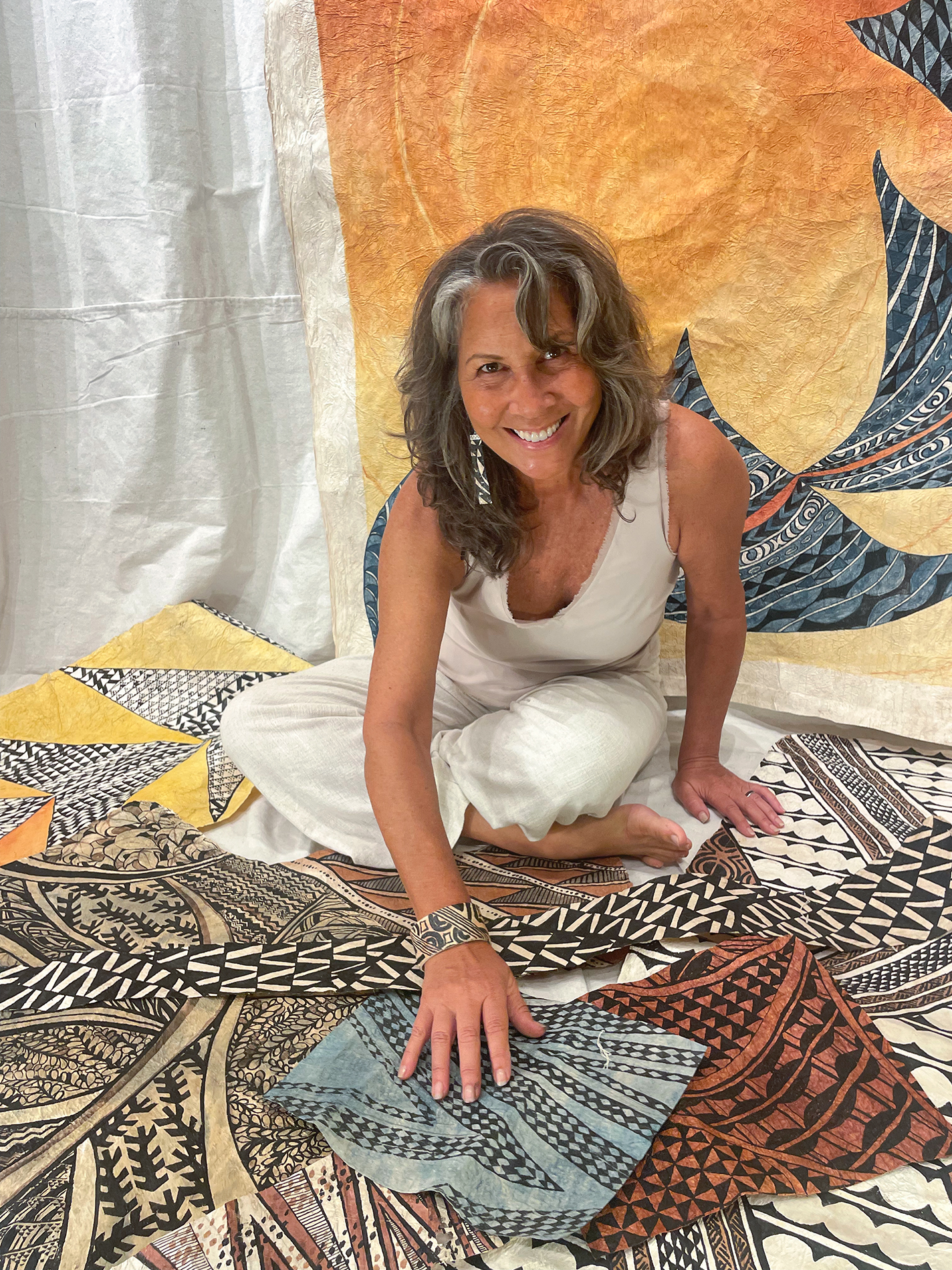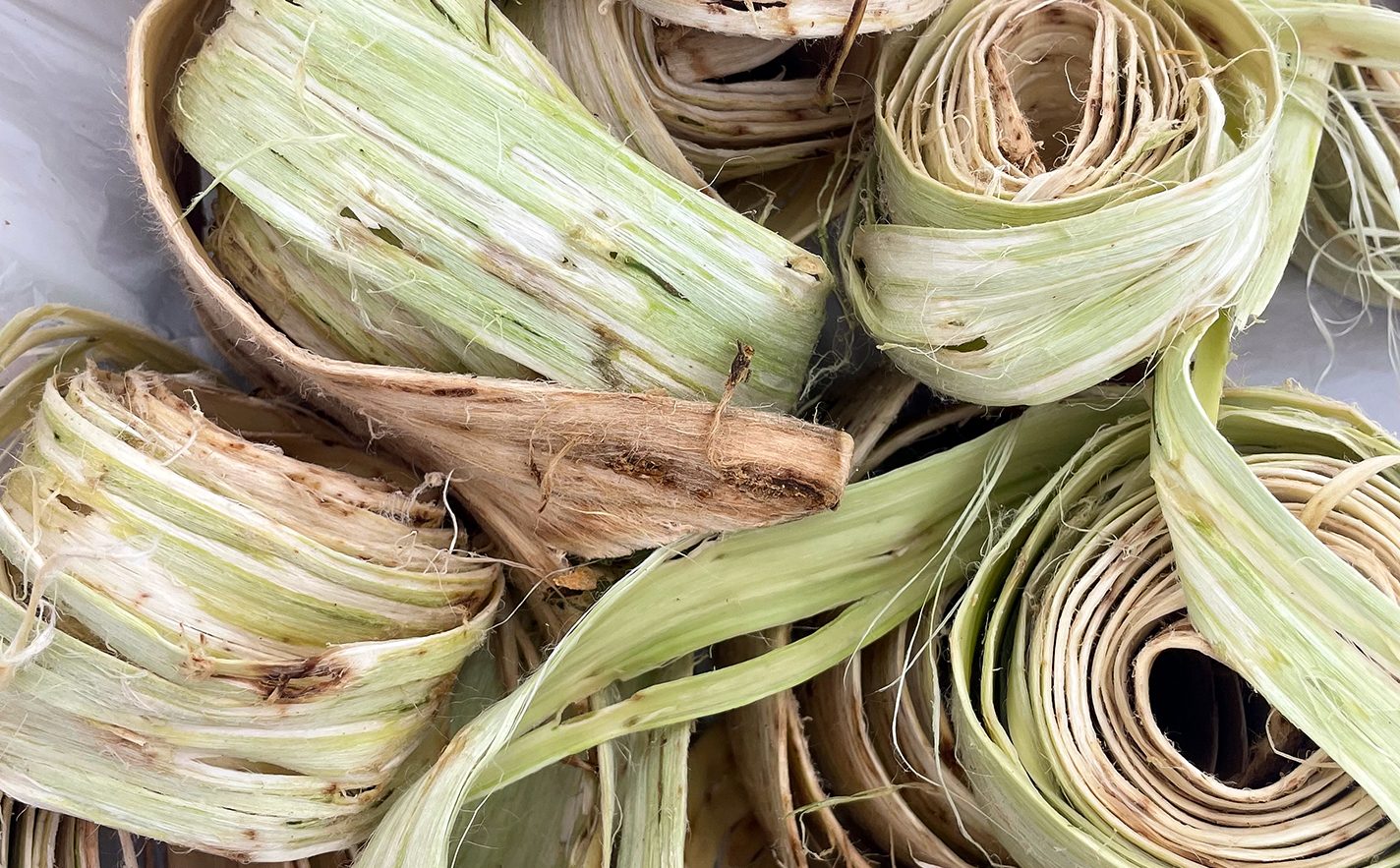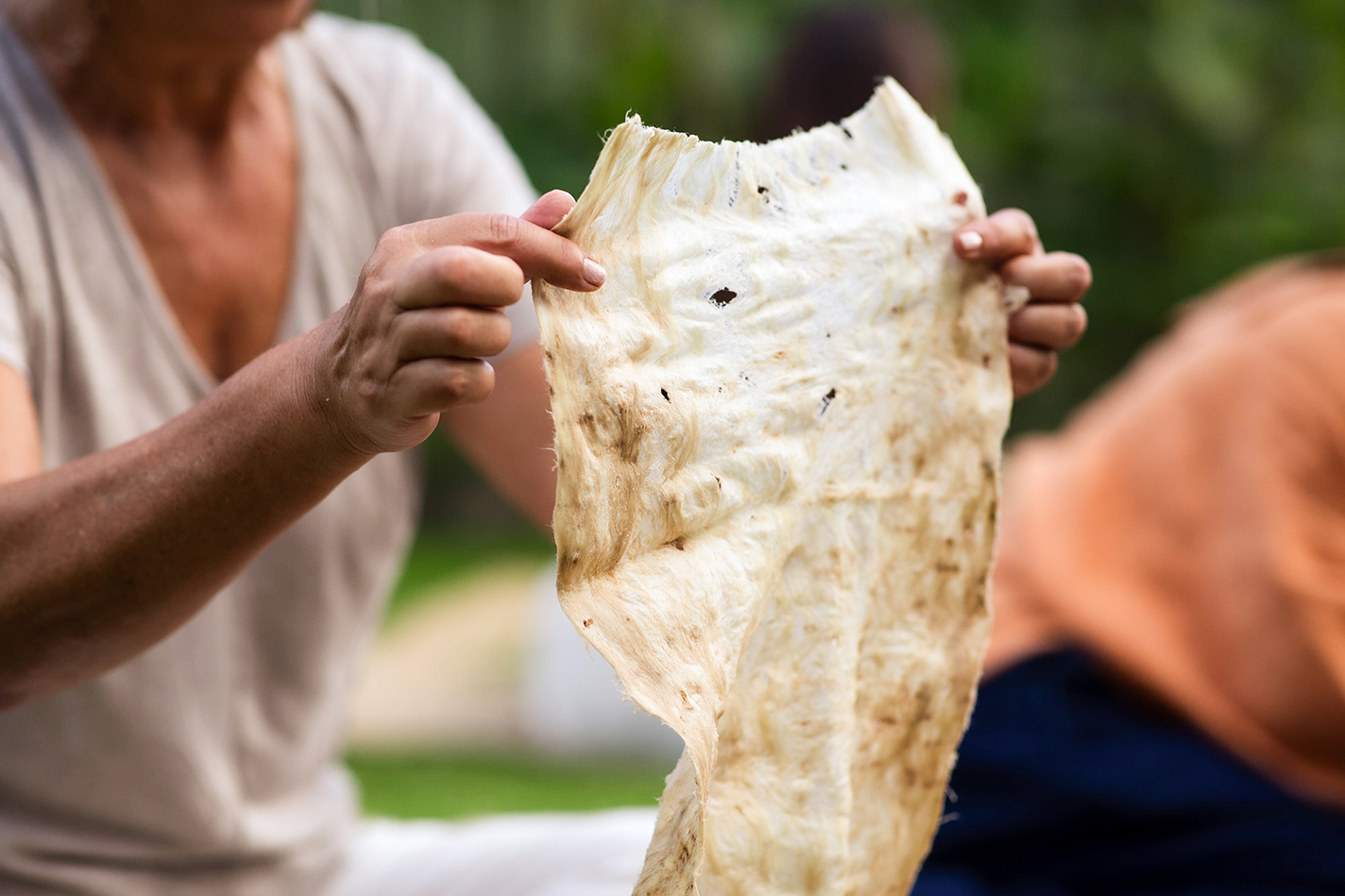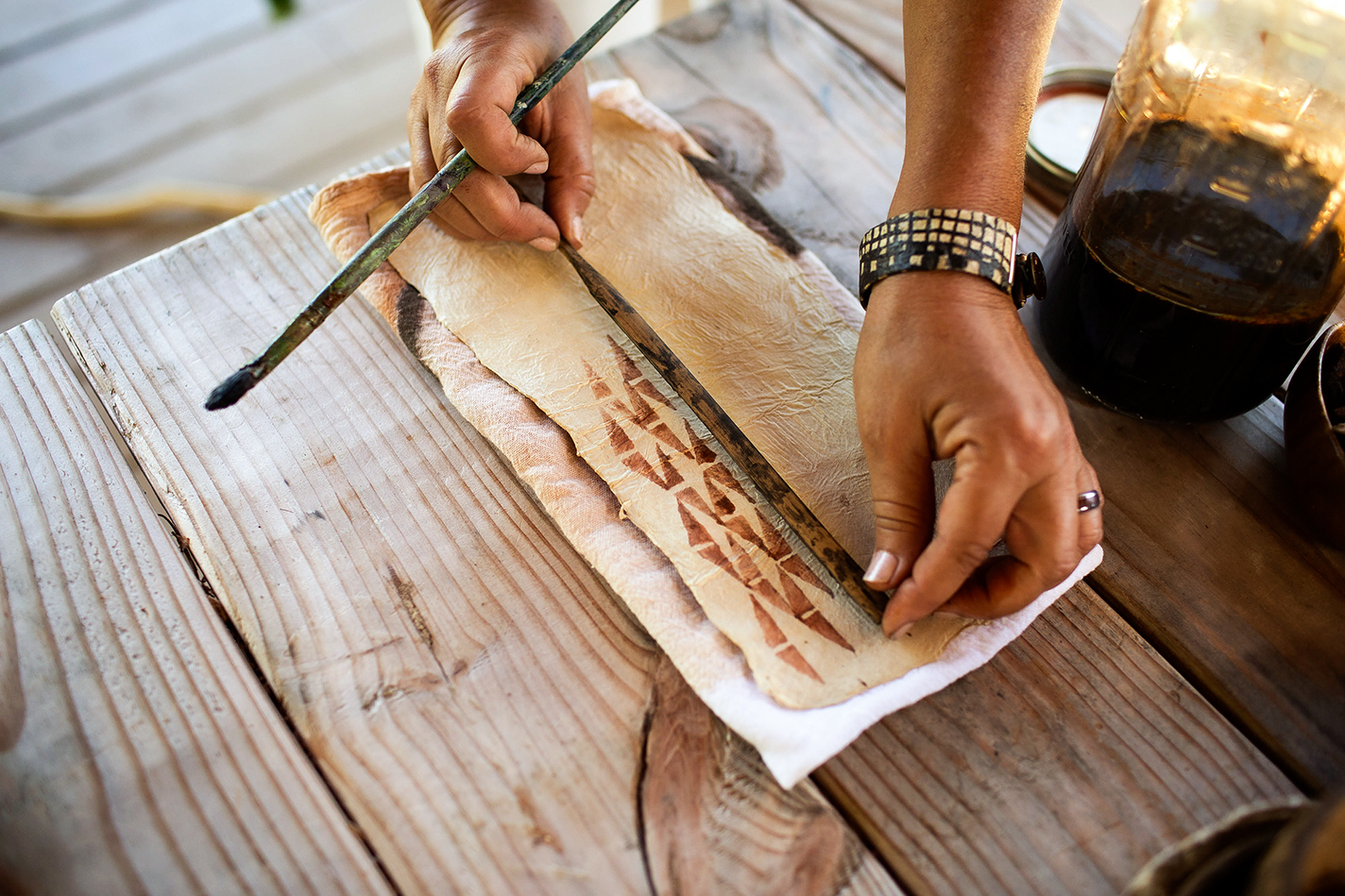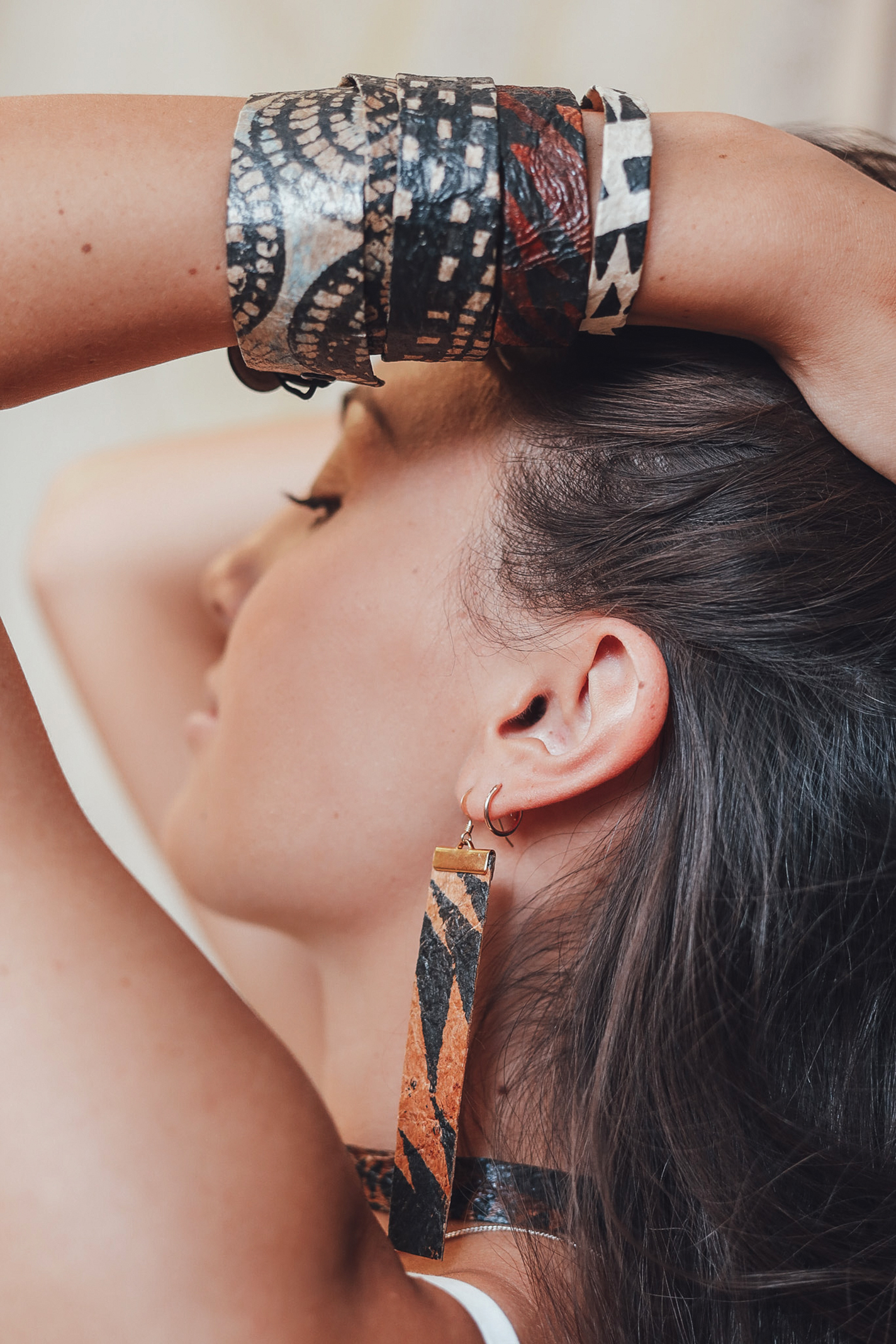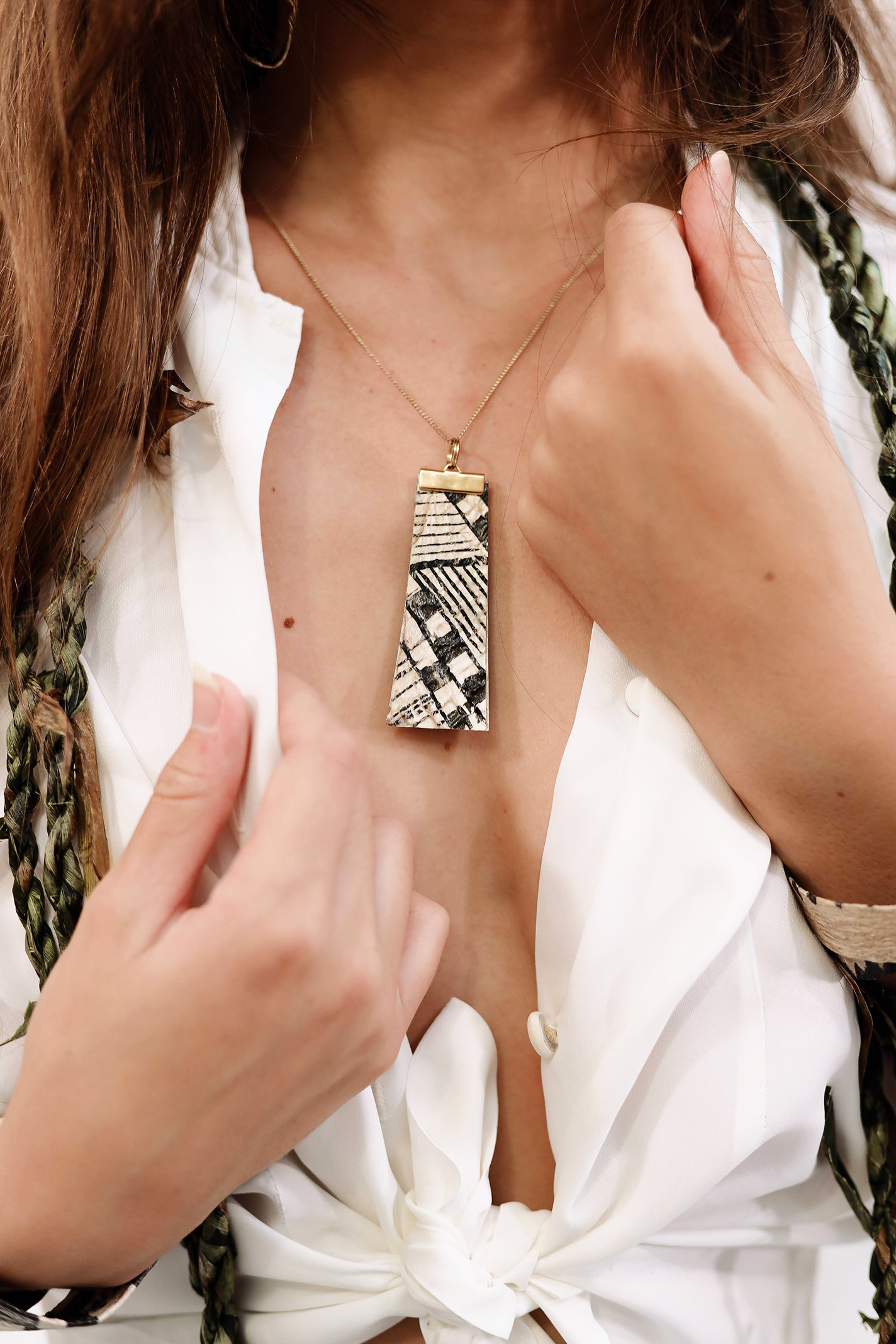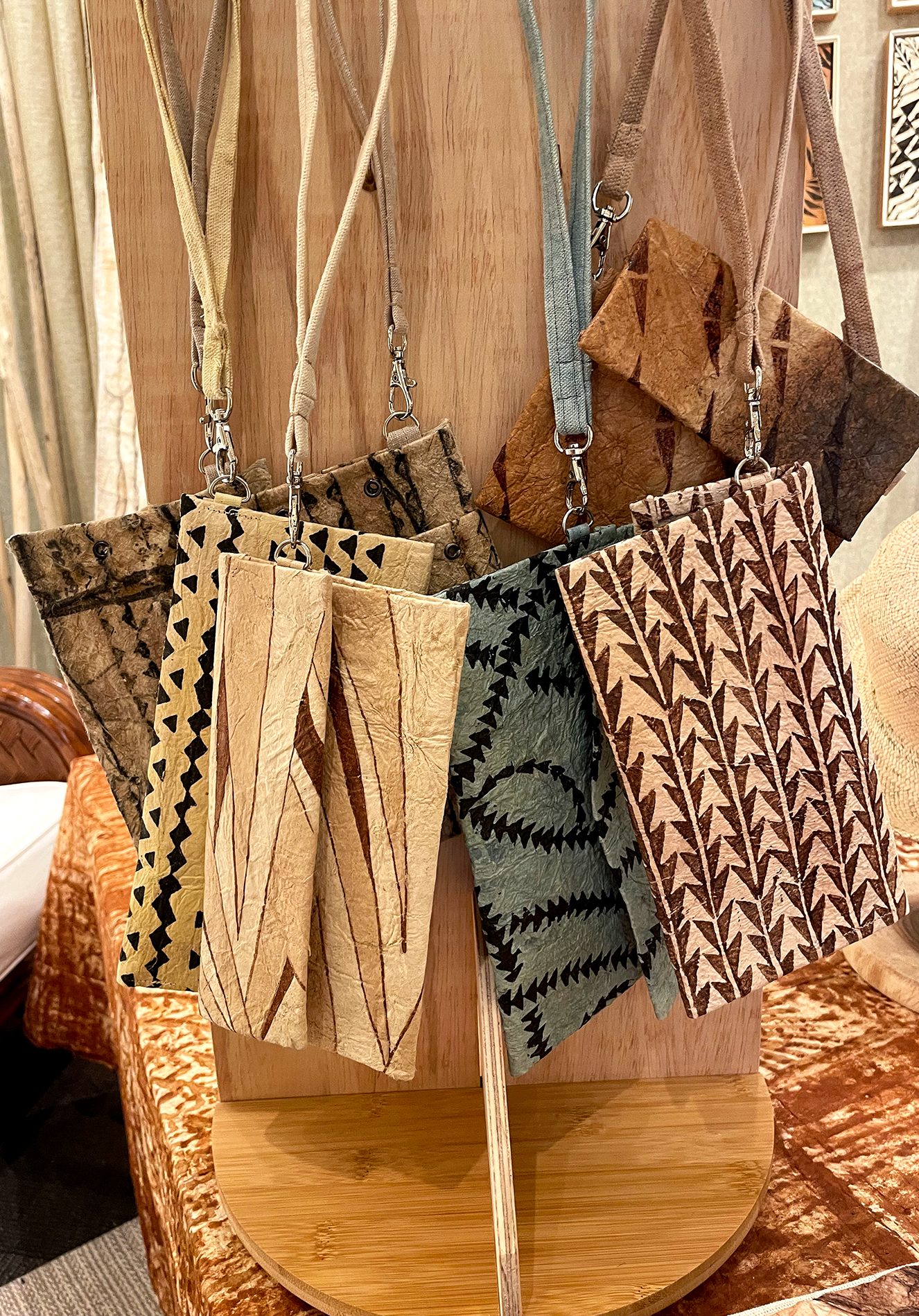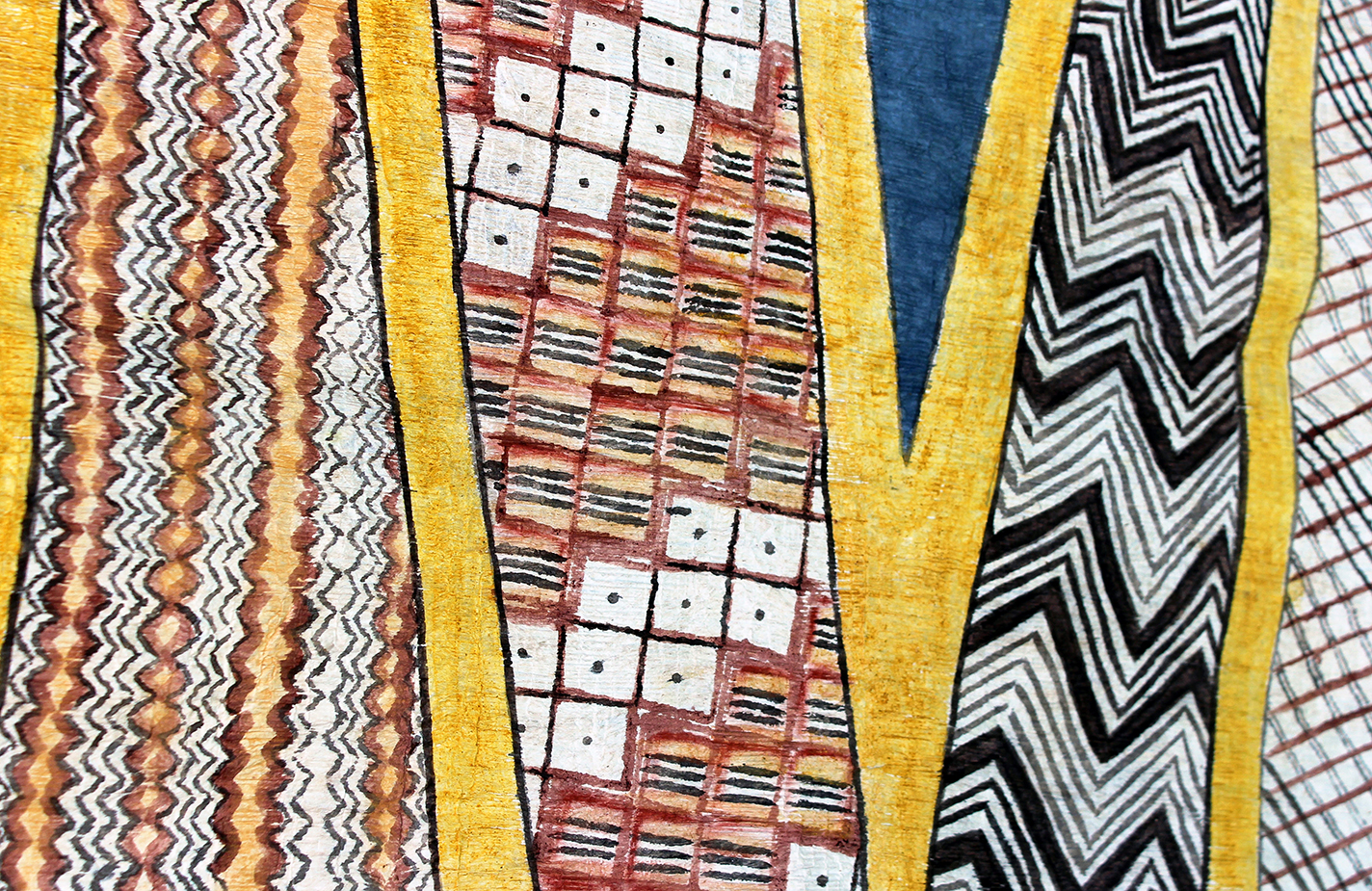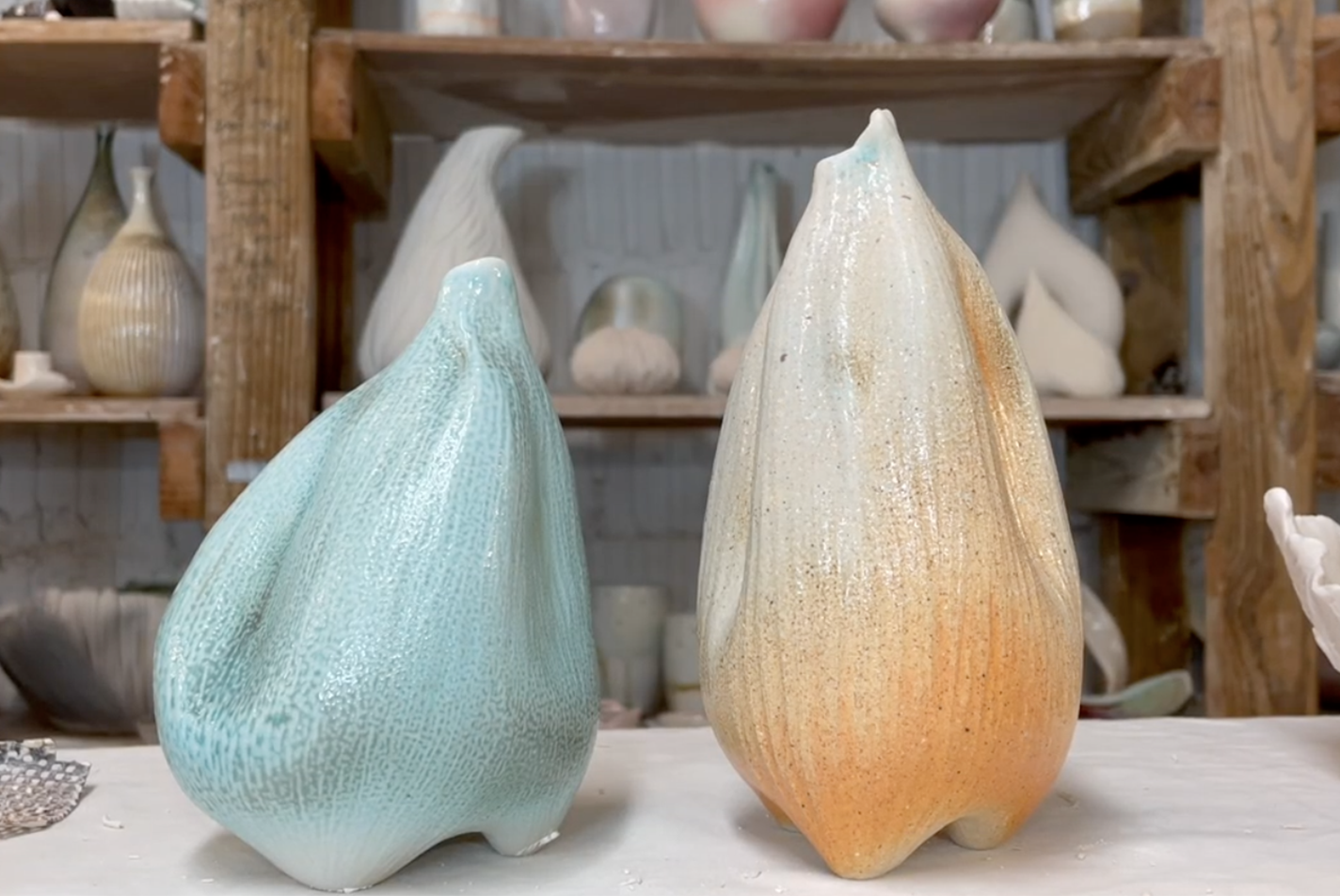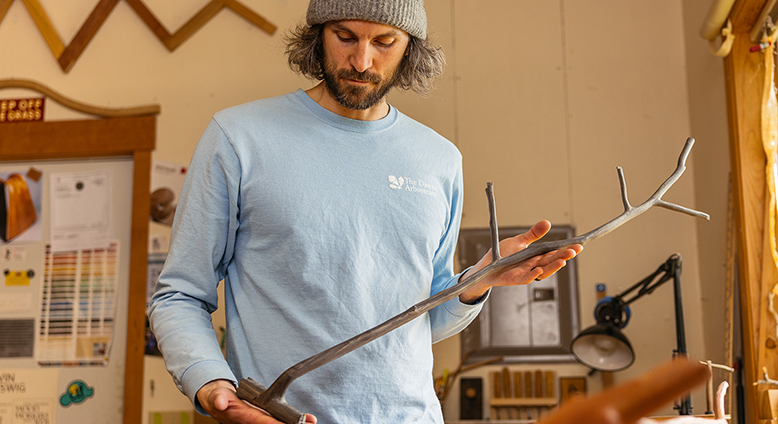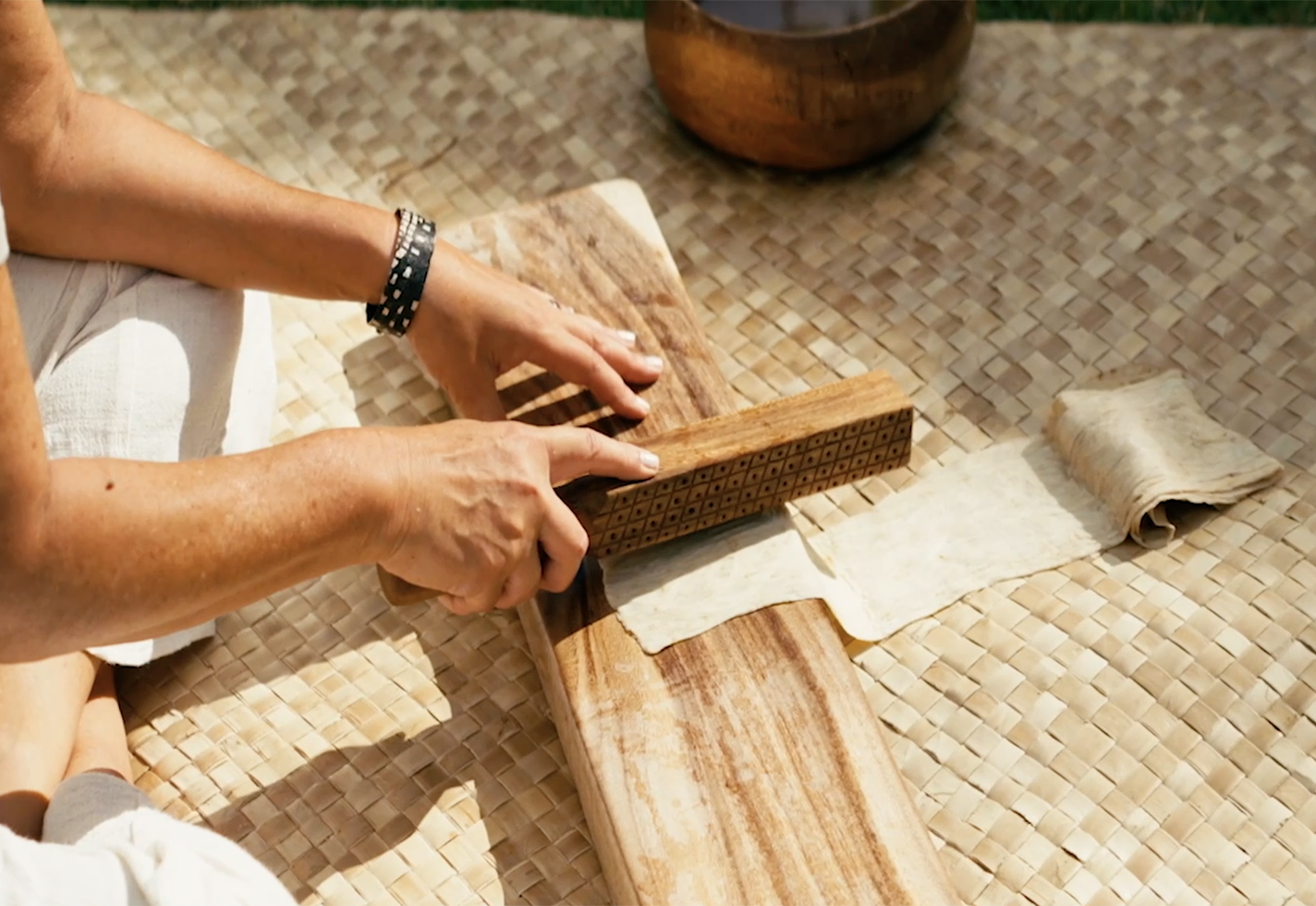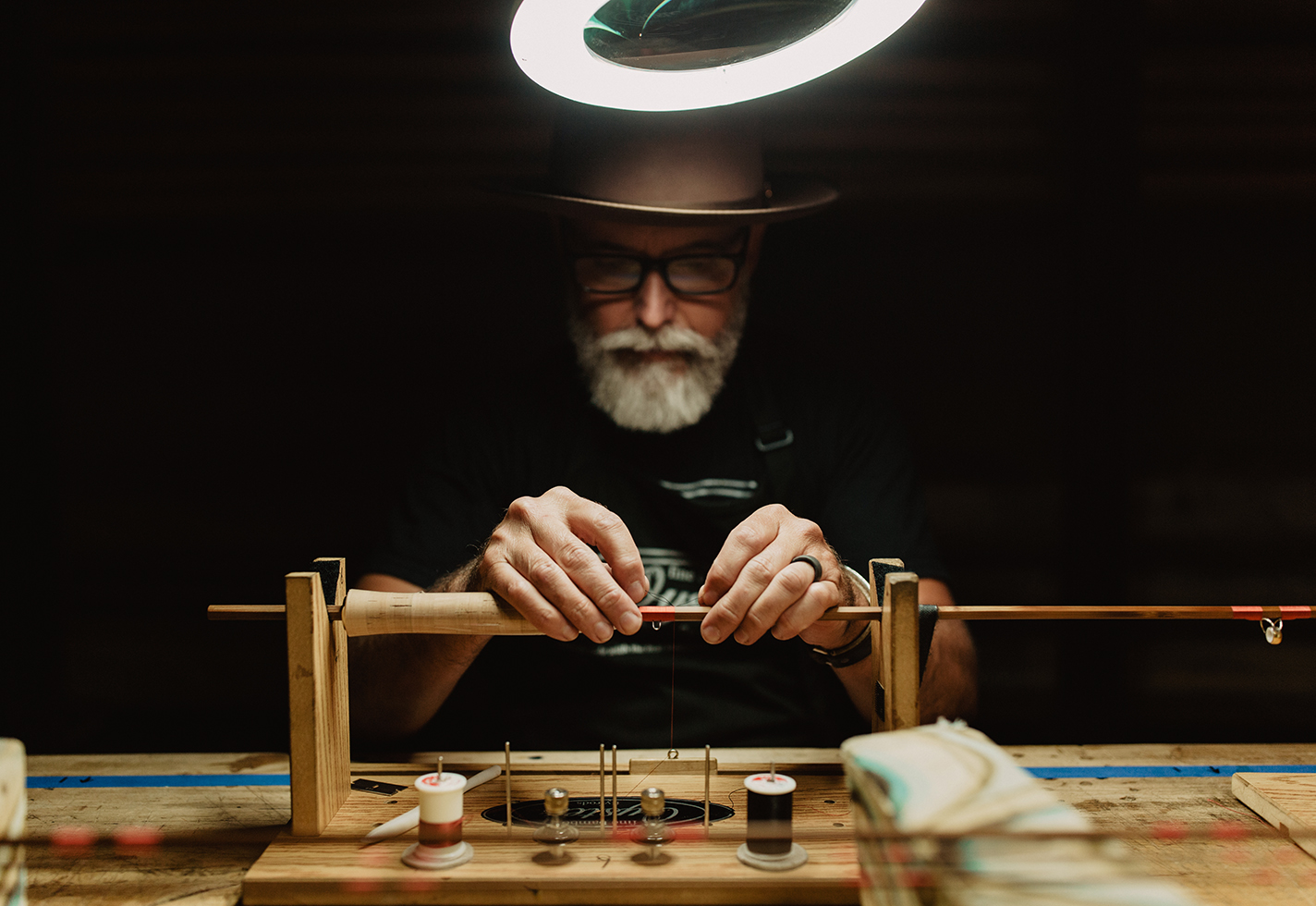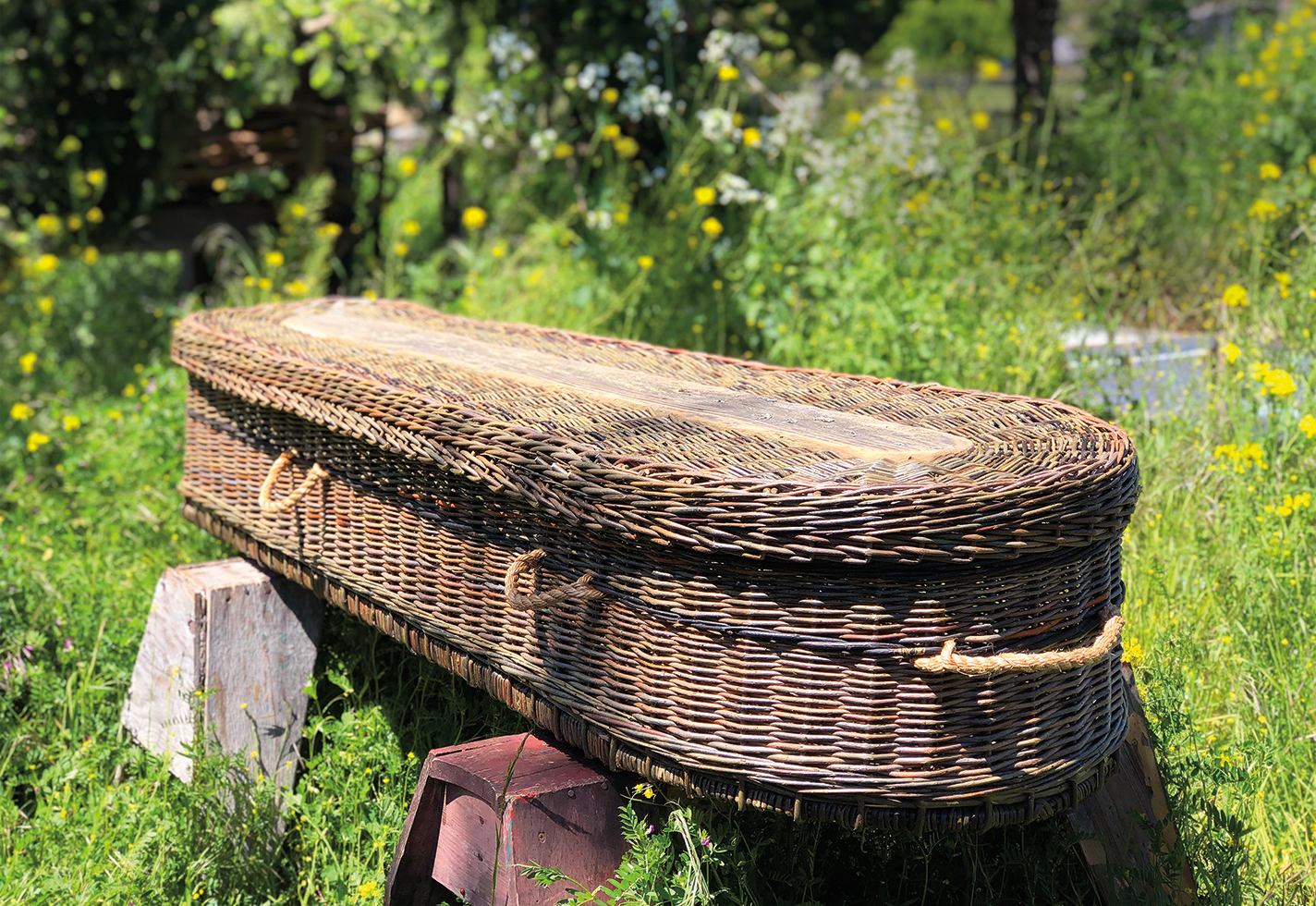Maybe it was the syncopated tap-tap-tap of the wooden hohoa (mallets). Maybe it was the visible transformation of strips of fiber into pliable cloth. Maybe it was the awakening in Lehuauakea’s genetic memory of a practice perfected by their ancestors. Whatever it was, they were hooked. “Especially after spending so much time on the continent, there was something in me that just felt right,” says the Portland-born artist. “It felt like I’d come home to myself.”
Until Western fabrics arrived in the late 1800s, kapa was one of the most refined art forms in Hawai‘i. Men made the necessary implements, including the four-sided i‘e kuku beaters that imprint a watermark on the cloth and the kua lā‘au (wooden anvil) upon which the cloth is beaten. Otherwise, the creation of kapa was solely the province of female makers.
While “commoners” on the islands typically wore plain, rough-hewn malo (loincloths) and pā‘ū (skirts), kapa makers also produced more elaborate textiles and kapa moe (blankets) that were soft and supple, colored with natural plant dyes, and stamped with geometric designs. These were given as gifts or used in ceremonial rites, including births and burials. The finest kapa belonged to the ali‘i (chiefs), beaten so thin it was almost transparent—“clearer than the light of the moon,” wrote Hawaiian historian Samuel Kamakau in 1870.
After that initial kapa making session, Sen went on to teach Lehuauakea in depth about each part of the process, from tending the baby wauke trees to harvesting, stripping, fermenting, pounding, dyeing, and stamping the bark.
A student of master crafters such as Puanani Van Dorpe and Beatrice Krauss, Sen resurrected kapa making during the 1970s as part of the Hawaiian Renaissance. It was during this era that Hawaiian language, traditional arts, hula, and voyaging saw a resurgence and planted the seeds of decolonization. Today, all of Lehuauakea’s kapa is founded on sustainable harvesting of traditional materials. Some of their pieces are objects of art for galleries; some, like kapa for cultural ceremonies, are utilitarian; and others, like their dramatic wearable pieces, fall somewhere in between. Since the Beginning and End of Time (2024), for example, is a hand-embroidered cloak of indigo-dyed kapa with bells and shell buttons.
“It’s important to not box ourselves in any more than we already are as contemporary Indigenous makers,” Lehuauakea insists. “I don’t have to copy the work of my ancestors. I don’t have to make kapa that looks like it was made in the 1800s. There’s a lot of skill in that, but that’s not my voice.”
Lehuauakea’s work is influenced by their upbringing in Portland and Pāpa‘ikou on Hawai‘i Island, by the Japanese part of their heritage, by their Hawaiian education at Kamehameha Schools, and by relationships with other Indigenous artists on the US continent. “I’m only one part of a giant tree of different experiences as a modern Hawaiian, so the best I can do is express my own perspective as authentically as I can,” says Lehuauakea, who now splits their time between O‘ahu and Santa Fe, New Mexico. At the same time, they acknowledge a pressure to carry out their work responsibly and respectfully. “That’s what we’re called on to do, especially when we’re entrusted with knowledge that at one point wasn’t accessible.
